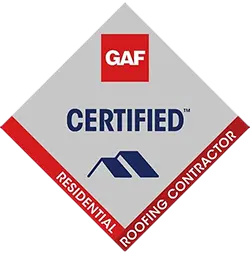Shoreline Shelters: Countrywide's MN & WI Blog
What Are Ice Dams and Why Should a Homeowner Be Concerned If Ice Dams Develop?
Ice Dams
Ice dams are ridges of ice that develop at the edge of roofs and obstruct the flow of water from melting snow. The water that builds up behind the dam might leak into a house, causing harm to the insulation, walls, and ceilings, among other things.
What Causes Ice Dams?
They are caused by uneven surface temperatures on roofs. When snow accumulation creates an insulating layer in cold weather that would cause the freezing point to be within the snow layer if it were not subject to melting, ice dams on roofs develop. Instead, snow on the roof is melted by building heat entering through its surface. As a result, melting water starts to run down the roof until it reaches a spot where the surface of the roof is below freezing, which is often where the eaves are and where there is no building heat. When the melting water hits the frozen surface, ice builds up and forms a barrier that prevents the melted water from flowing off the roof any farther.
The snow melting above the dam makes it bigger with time, but it will only extend to the parts of the roof where the average temperature is below 32 degrees. The water above logs behind the ice dam. The outside roof covering’s faults and any gaps allow this water to enter. It might come from the attic and seep through the insulation in the ceiling or into outside walls, staining the finish on the ceiling.
Contact Us
Let Us Know How We Can Help And We’ll Be In Touch Shortly!





Effects of Ice Dams
Ice dams can cause leaks through the roofing material. The underlying structures such as the house’s insulation might get destroyed by the build up water leaking inside. The walls and ceilings of the house might also get harmed requiring extensive repairs in extreme cases and new paint jobs. Ice dams also pose a threat to the occupants if they get too heavy and fall off. Ice being slippery might also lead to bad injuries when people fall as they try to get the ice dams off.
Mold and mildew grow in wet places and can be found in homes where moisture from ice dams has entered. These may result in allergies and other diseases associated with dampness. Drying out damp or wet areas helps stop the formation of mold and mildew. It should however be a short term solution because the whole problem of ice dams needs to be addressed fully.













